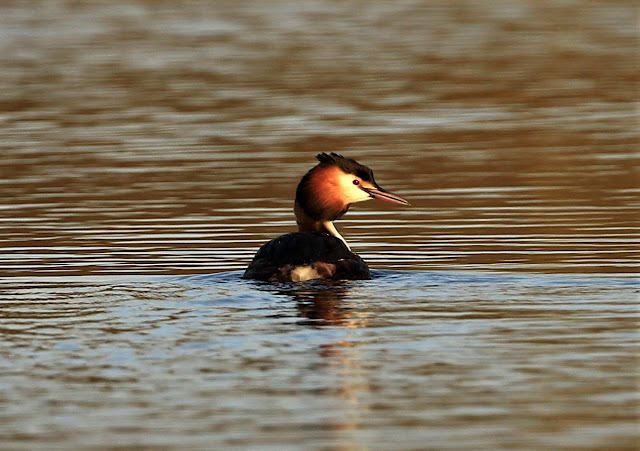I arrived at Lynford Water shortly after sunrise hoping to see if the recent wintry spell has brought in any winter Duck species. I also wanted to check for evidence of Woodlark on suitable habitat near the water.
The relative shelter of the woodland by the car park produced singing Goldcrests. A Marsh Tit was singing its distinctive "chip-chip-chip-chip-chip-chip-chip-chip" song.
Once on high ground overlooking Lynford Water, I could see about 40 Tufted Duck, also a bright looking duck by itself was a very smart looking male Goldeneye. Even at range the dark head and , large white patch below the eye was highly distinctive.
 |
| 40+ Tufted Duck present at Lynford Water (I love their 'giggling' like call). |
 |
| Tufted Duck (female) on Lynford Water |
 |
| Mallard on Lynford Water |
 |
| Great Crested Grebe (One of a pair on Lynford Water) |
Checking known Woodlark habitat did not reveal any singing birds, however, walking along the close cropped heath-like grassland revealed a pair of Woodlarks together shuffling along the ground and feeding.
The Sallow habitat alongside the water produced 3 singing Reed Buntings, clearly, the large areas of inaccessible habitat will hold more birds.
 |
| Woodlark - one of a pair at Lynford Water. |
No comments:
Post a Comment